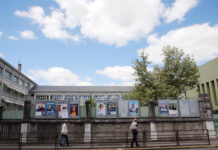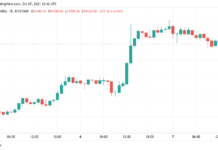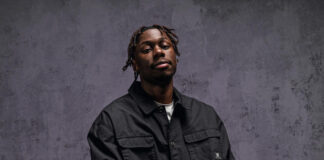Le Victoria and Albert Museum (V
Created in 1852, at a time when the United Kingdom was expanding its empire, the V
‘Africa Fashion’ is the largest ever exhibition of African fashion in the UK. It opens with the era of independence, years of liberation and great political, social and cultural transformation, when dressing can be a political act. Following the example of Ghanaian Prime Minister Kwame Nkrumah, who, in 1957, displayed himself in a kente loincloth, a colorful and thick traditional fabric. Just after announcing the independence of the country, he thus abandoned the European costume in a symbolic gesture. Even today, the choice to wear a particular color or pattern has specific meanings.
Minimalist aesthetic
Aso oke, ankara, bogolan… A wide range of fabrics are produced on the African continent with very diverse materials and techniques. As sculptor El Anatsui once said, echoing artist Sonya Clark: “Cloth is to the African what monuments are to the Westerner. » Fabrics are reinvented and brought up to date, such as adire, an indigo-dyed fabric, traditionally produced in southwestern Nigeria and now popularized by brands such as Maki Oh , Lagos Space Program and Orange Culture.
On two levels, the creations of emblematic stylists from the middle of the 20th century, including the Nigerien Alphadi, the Malian Chris Seydou or the Nigerian Shade Thomas-Fahm, stand side by side with contemporary designers such as the Nigerian Bubu Ogisi, whose Iamisigo brand highlights honor fabrics and techniques from the continent. The minimalist aesthetic of the brands Katush, based in Kenya, or Moshions, in Rwanda, contradicts the presuppositions of an African fashion that would overflow with colors and patterns.
In this very eclectic catalog, “there is a link that connects all of this, it is the passion for culture”, stylist Artsi Ifrach told AFP. “The idea is to provoke people’s memories, to make them feel something,” adds the creator. A successful bet with the piece he made especially for the exhibition, designed from a typical British wardrobe trenchcoat and transformed into an oversized gold burqa.














